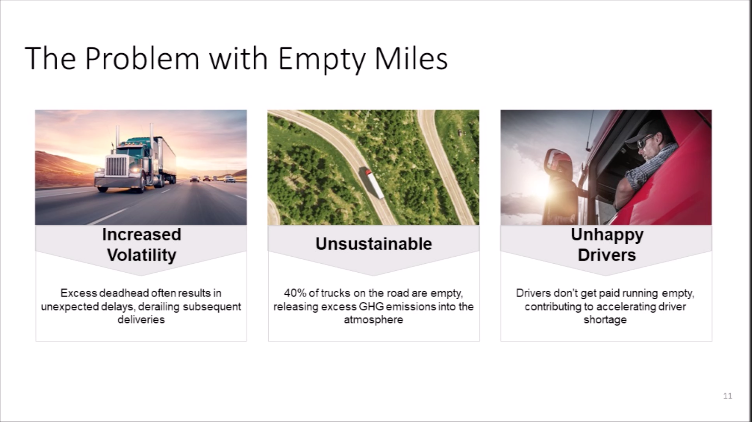Machine learning helps crack collaborative shipping conundrum
CSCMP EDGE conference session addresses how Land O’ Lakes used FourKites solutions to make it easier to find partners to share backhaul opportunities.

For more than 20 years, shippers and carriers have been looking for ways to reduce “empty miles” by finding opportunities for trucks to pick up loads for other companies while heading back to their home base.
What sounds like a good solution in theory often proves to be difficult to execute in reality, however. One of the biggest stumbling blocks has been the long time it takes to find compatible partners. Not only do you have to find another company that is interested in collaborating and has lanes that overlap your own, but there’s also questions of equipment compatibility and having similar shipping requirements and dates. This “matching” process often involves a long period of volleying data and information back and forth.
The agricultural cooperative Land O’ Lakes (perhaps best known for its butter products), however, has found success by using FourKites’ Lane Connect application, according to Dustin Braun, senior director of logistics, at an educational session at the Council of Supply Chain Management Professionals EDGE 2020 conference. This web-based application from the supply chain visibility solution provider uses machine learning to find potential matches among its network of carriers and shippers. Potential partners that are not on the FourKites solution can also upload their information to participate.
The program has shown a strong return on investment, according to Dustin Braun, senior director of logistics for Land O’ Lakes, including: over 1,000 empty miles eliminated per week, 61 tons of carbon dioxide reduced annually, and a 25% cost reduction on lanes involved. Additionally, the lanes involved have seen a 98% on-time delivery rate.
Furthermore, the program has proven popular with Land O’ Lakes employees. “We turned our team loose and they just ran with it,” Braun said. “It’s not been me pushing the team, it’s been the team pulling me along. We provided them with a cool new tool, and they are eating it up.”
Interested in hearing this session? Register for the conference, here.
Related Articles
Copyright ©2024. All Rights ReservedDesign, CMS, Hosting & Web Development :: ePublishing